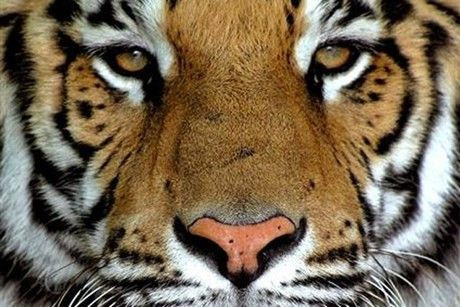India Lifts Tiger Tourism Ban But Paws Remain Out

Is a ban on so-called “tiger tourism” good for the big cat’s dwindling population? That was the question at hand as India’s Supreme Court made its highly anticipated ruling on the matter on Tuesday.
India is home to over half of the world’s remaining tigers, but its tiger population has declined dramatically from around 100,000 at the beginning of the 20th century to about 1,700 today, according to the World Wildlife Fund.
Nevertheless, the Supreme Court said Tuesday that tourism could continue within the reserves, albeit with some conditions. The ruling came three months after the same court issued a temporary ban on tourism in “core zones.”
India has 41 government-run tiger reserves that are divided between core zones and buffer zones, which are the fringe areas surrounding the reserves up to a distance of 6 miles (10km). Some conservationists argue that commercial tourism should keep far away from the core areas, which are critical habitats for many tigers, where they breed and hunt. The court, however, has ruled that some activity will be permitted for “regulated, low-impact tourism,” adding that states are free to challenge new guidelines laid out by the National Tiger Conservation Authority as they see fit.
The guidelines order all permanent structures to be phased out from core areas and for tourism to be limited there to 20 percent. They also ban new tourism infrastructure from the reserves.
After the temporary ban on July 24, state governments raised objections, claiming that it would deal a blow to their tourism-dependent economies. In reversing the ban Tuesday, the Supreme Court ordered states to prepare a tiger conservation plan within six months, to be submitted to the National Tiger Conservation Authority upon completion.
The row and subsequent rulings are noteworthy in that they pitted conservationists against each other, with opposing groups claiming to have their own solution to the problem.
Ajay Dubey, an activist who filed the petition in the Supreme Court, complained that authorities in several states had permitted rampant construction of hotels and resorts within the core areas of some reserves. He said limiting tourists’ access to the best parts of the parks was “a small price to pay” for the pressure tourism was exerting on the animals.
Many tour operators and conservationists, meanwhile, rallied behind the notion that tourists don’t kill tigers, poachers do. They claimed that ensuring locals benefit financially from tiger conservation is integral in preventing them from working with poachers or encroaching on the reserves.
The Wildlife Protection Society of India estimates that poachers have killed 26 of the wild cats in 2012, with most tiger parts finding their way into the traditional medicine markets in China.
Vishal Singh, India director of Travel Operators for Tigers (TOFT), said “The ban has ensured the airing of a range of opinions … and produced some ecotourism guidelines to stop poor tourism, but has also badly affected hundreds of thousands of local livelihoods and legitimate businesses both directly or indirectly.
“It’s now time to get back to work, to ensure that revenues that flow through park fees back into conservation and communities start flowing again, that livelihoods are restored and legitimate businesses are allowed to continue to show India’s very best natural heritage to its citizens,” he added.
Singh said he hopes the ban and heated debates it fostered will help park guides, lodge owners and local citizens work together in far greater harmony than exists presently over the coming years.
India, a country whose tourism brochures prominently feature tigers, attracted more than 6 million international tourists in 2011 at a growth rate of nearly 9 percent over the previous year, according to government figures. Officials say about 15 percent of the revenue generated came from wildlife tourism, which employs tens of thousands of people at various parks throughout the country.
© Copyright IBTimes 2024. All rights reserved.






















